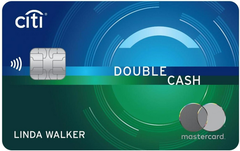The Capital One Savor Cash Rewards card offers excellent rates on popular everyday categories. You can also enjoy a decent welcome offer and Capital One’s standard perks, making this card a solid choice.
Rewards: Excellent everyday categories
The Capital One Savor Cash Rewards card earns a generous 4 percent cash back on entertainment, popular streaming services and dining with no limit, which ranks it among the best credit cards for restaurants on the market. You’ll also earn a solid 3 percent cash back on grocery spending. With this card, you can cover a significant amount of your everyday expenses while earning substantial cash back.
Rewards don’t expire as long as you have an active account and can be redeemed for cash back as a check or statement credit. If you prefer simpler reward redemptions, you can automatically redeem your rewards for a statement credit or check on a certain date or once your rewards balance reaches a selected threshold (from $25 to $1,500).
Additionally, you can choose a gift card or use your cash back to cover past purchases. You can redeem rewards via Amazon.com or PayPal, but you will often get less value.
If you have a Capital One card that earns Capital One miles, you can convert your cash back to miles at a 1:1 ratio, which allows you to boost your rewards value further. According to Bankrate's valuations, Capital One miles have a 1.7 cent per point value with the right travel partner.
Perks: Standard but solid benefits
The Capital One Savor Cash offers a terrific portfolio of travel, shopping and account protections. However, the card lacks any credits of monetary value, like a complimentary subscription, that could help offset its annual fee — a perk other cards in its class may offer.
Foodies and entertainment lovers will enjoy the 24-hour complimentary concierge service that provides personalized assistance for dining, entertainment and travel issues. It can help when trying to book exclusive reservations and experiences., such as early access to presale concert tickets, reservations at top restaurants and exclusive culinary events.
You’ll also get standard safety features to protect your card, including fraud alerts, virtual card numbers and zero fraud liability. Virtual card numbers protect your account online by generating and tracking a specific virtual card number through the Eno assistant tool rather than sending your actual card details. This extra layer of security is a nice touch if you frequently shop online.
Capital One has two online shopping tools, Paribus and Capital One Shopping, that can help you save money. Paribus monitors your recent purchases for price changes, alerts you if the price drops and helps you get a refund of the difference. Capital One Shopping is a browser extension that compares prices at major retailers, automatically applies coupons at checkout and allows you to earn rewards for your purchases.
The Capital One Savor card also offers standard travel perks, such as no foreign transaction fees, travel accident insurance and travel assistance services. While these are in line with other cards, having these features on one of your cards can save you when travel issues arise.













